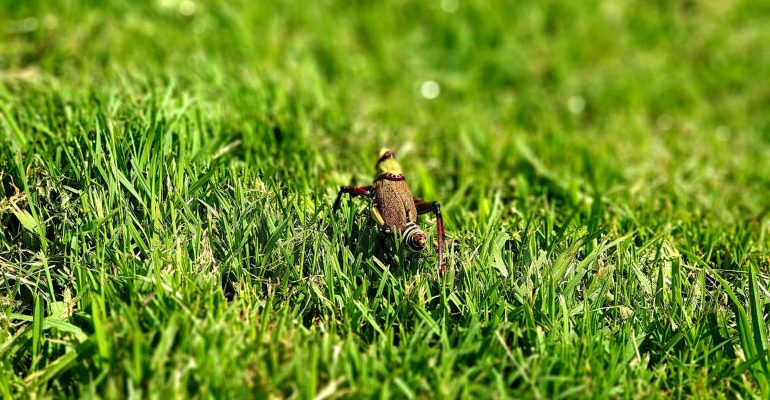Desert locusts are insects that live in big groups called swarms. They are common in Africa, South Asia and the Middle East. These swarms can travel up to 150 kilometres in a day, and a swarm that covers the area of a football pitch can contain over 800,000 locusts.
The life cycle of a locust
Female locusts lay eggs in wet, warm soil or sand. After 2 weeks the eggs hatch, producing baby locusts called ‘hoppers’. Hoppers are dull-coloured locusts without wings. Over 1-2 months hoppers grow wings and develop into adults. As the locusts mature they begin to act as a group and change colour from dull green/brown to pink and then to yellow and black. Yellow and black locusts are the fully mature form that live in close groups. These locusts fly in swarms and eat vegetation such as leafy crops.
What are the effects of swarms?
Despite their size, each adult locust can eat it’s bodyweight in vegetation per day. Some large swarms can eat the same amount of food in one day as 35,000 people. As locusts eat crops that are used to feed humans and cattle, this poses a threat to food supply.
Some years, such as in the 2019/2020 season, swarms are much bigger than usual. This is due to higher rainfall levels, meaning that conditions are better for locusts to reproduce. This is a problem as larger swarms are harder to control.
How can swarms be controlled?
The most effective way to stop swarms is by spraying plants with pesticides that kill the locusts when they eat the plants. This stops the locusts from eating all the crops, and the sprayed crops are still safe for humans to eat. Countries where swarms are common have been doing this for many years, and are able to teach these methods to others. For example, Kenya has trained 240 people from other countries to help them control the 2020 swarms. However, there are some downsides to pesticides. Pesticides can leak from soil into rivers, causing water pollution. There are also worries that locusts and other pests may become resistant to pesticides in the future.
Scientists are also developing methods of predicting where locust swarms will happen. The Intergovernmental Authority on Development in Nairobi has developed a supercomputer model that predicts locust breeding areas using weather data. This enables governments to target the locusts when they are still hoppers, which makes them easier to control. So far, the model has been 90% accurate. NASA (the American space agency) is using satellites to monitor soil moisture and vegetation from space. This will help us to understand how environmental changes affect locusts.
Overall, desert locust swarms have declined in the last 50 years. This is mostly due to improved control and monitoring. It is not known how climate change will affect swarms, but with new technologies and improved control, hopefully levels will continue to decrease.

